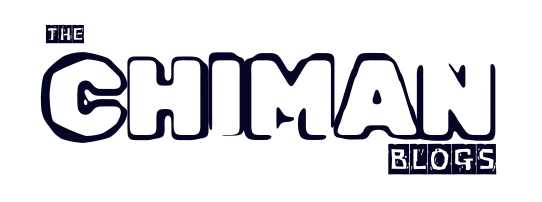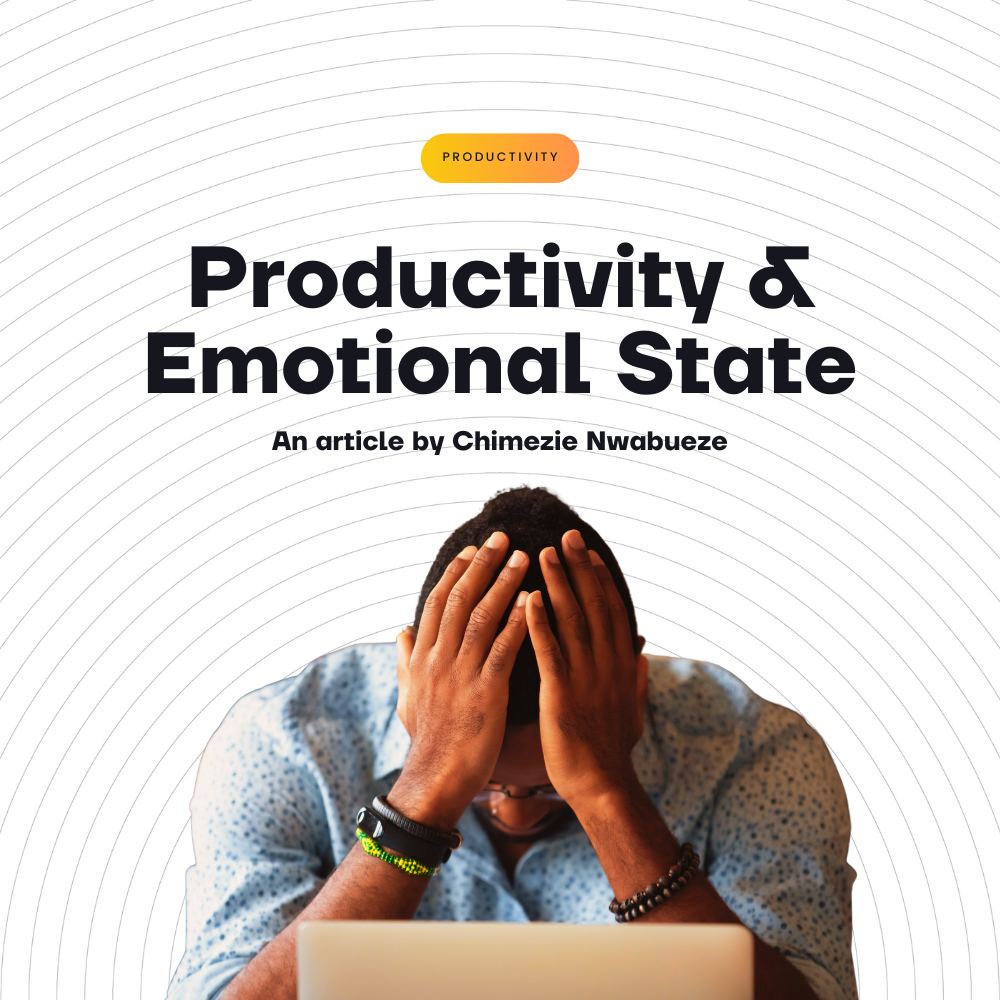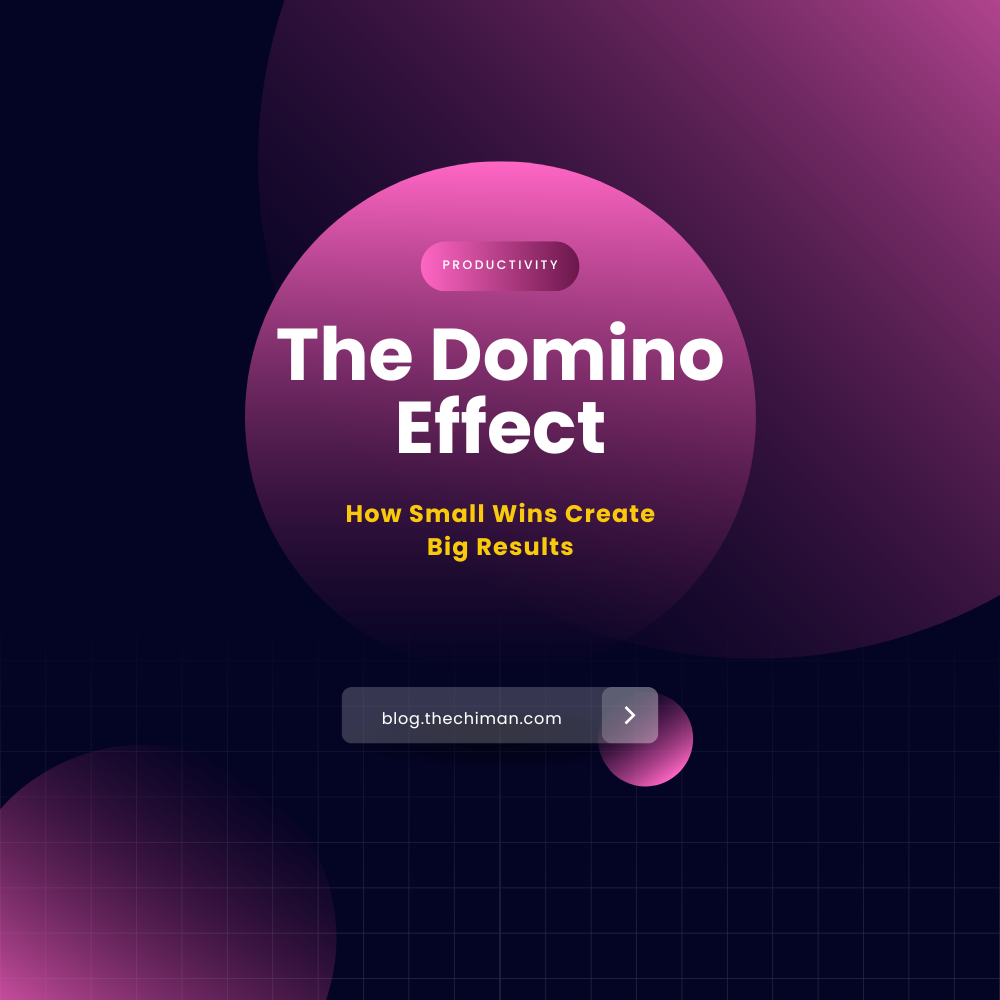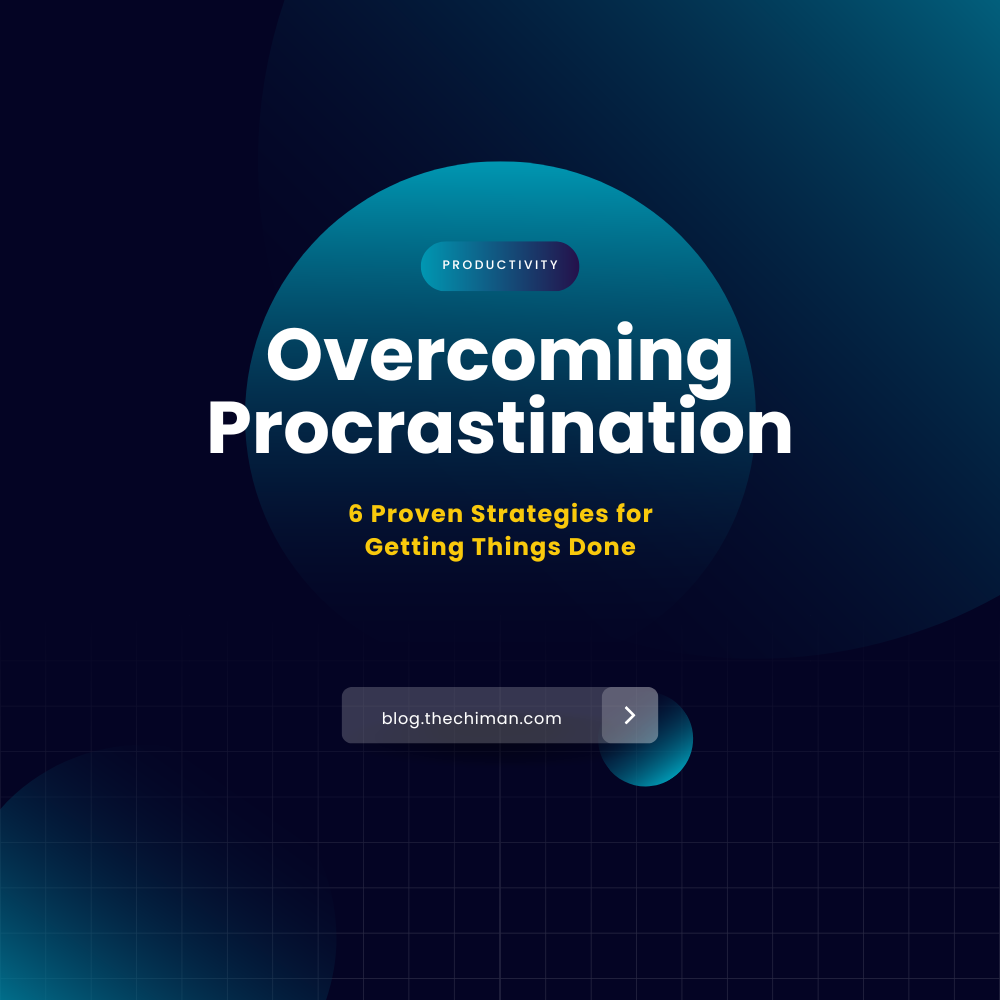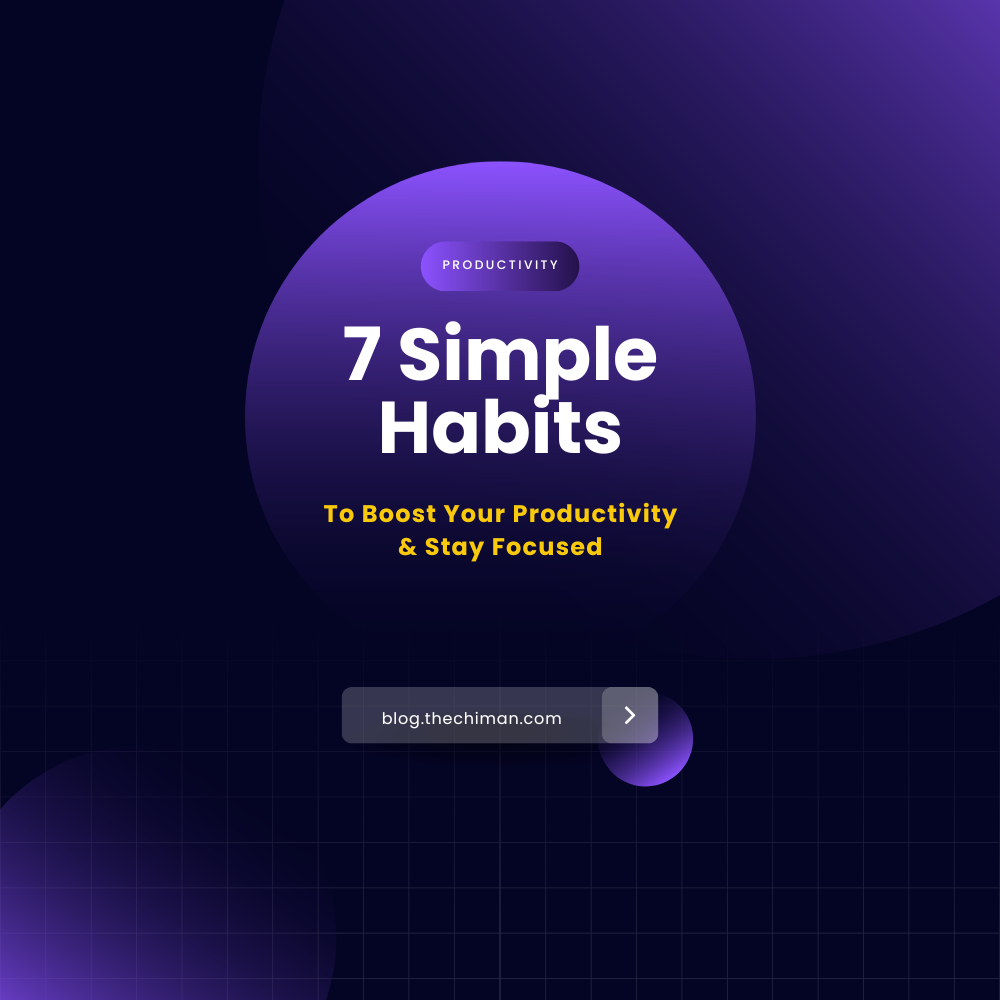Productivity Isn’t Just Doing More—It’s Managing Your Emotional State
Have you ever spent time planning and strategizing for the week ahead – set goals, set systems, plan action steps, and roaring to go – only to start the week and feel awfully unmotivated, stressed, or somewhat “off”? All the excitement and planning you put in, and there you are feeling off and wondering where all the energy went.
In the last edition of this newsletter, I took time to unpack why systems are critical to productivity. After that article, I got quite some encouraging feedback, and it was nice to see how the article was helpful to a lot of people as I had hoped. Studying and experimenting systems for my own personal productivity had been of great help to me too. However, as I continue to explore more about productivity, I realize that sometimes, focusing on systems without understanding how best we fit into the systems could lead to counter-productivity.
When we think about productivity, whether personally or professionally, we often think of calendars bursting with tasks, time management and focus systems like Pomodoro timers ticking away, or email inboxes at zero. We chase systems, schedules, and hacks with the assumption that they are the only secret to getting more done.
But what if your missing link isn’t in your planner, but in your emotional state? What if with all the systems in place, the key to greater productivity has less to do with how much you do, and more to do with how you feel while doing it?
This isn’t a fluffy detour. It’s a core truth. Your emotional state determines your productive state. A deeper understanding of how our emotional states affect our performance can give us a glimpse into maximizing our productivity. In this edition, we will unpack why and how to start managing our emotional states for real, sustainable results.
You’re Not a Robot—Stop Working Like One
An often overlooked aspect of training or coaching people to get more done is how they feel in the context of the tasks or goals they seek to accomplish. Robots can execute commands regardless of their emotional context. Emotions do not affect them. You, however, are human.
Ever tried to write a report while anxious? Or attend a meeting while your mind is still spinning from a personal argument?
Chances are, even if you pushed through, your performance was off. That’s because emotions don’t stay in their lane—they bleed into every area of work and life.
Imagine trying to bake with a smoke alarm blaring overhead. You can follow the recipe, sure—but good luck focusing.
Emotions are at the centre of a lot of procrastination, avoidance or missed deadlines. We cannot run from them, so we must learn to pay attention to what they are saying and how to harness that information to improve our productivity.
The Hidden Emotional Costs of “More, More, More”
In the hustle for productivity, we often overlook the emotional residue of overcommitment, self-pressure, and perfectionism. Some of the biggest productivity blockers aren’t visible in your calendar—they’re hidden in your internal state:
-
Anxiety makes you avoid deep work.
-
Guilt makes you say yes to things you should decline.
-
Overwhelm leads to task paralysis.
-
Fear of failure keeps you tinkering instead of finishing.
-
Shame creates a mental fog that slows your execution.
For greater productivity, we don’t just need to work smarter; we need to feel safer, calmer, and more empowered while we work.
The Science: Emotions Impact Cognition
Research in neuroscience confirms that your brain’s emotional center (the amygdala) is closely tied to your thinking and decision-making centers (prefrontal cortex).
When you’re under emotional distress:
-
Your working memory shrinks.
-
Your creativity drops.
-
Your attention narrows.
-
Your motivation plummets.
So managing emotions isn’t optional for productivity. It’s strategic.
Productivity = Capacity × Clarity × Energy
To get more done, you cannot only focus on systems, resources, tools and strategies. You must also consider YOU – Your emotional predisposition to complete the task at hand per time. You might have the time (capacity). You might even know what to do (clarity). But without emotional energy, you’ll find yourself stuck, scattered, or sprinting into burnout.
This is why you can have the perfect system—and still sabotage your day if your emotions aren’t regulated. I remember a client I was coaching once who seemed to already be applying some of the systems we had identified for him in the course of our sessions. One day as I was asking her questions for clarifying the goal for the day, I realized her problem was not finding new answers. She was stuck in a cycle of poor emotional regulation which often meant she started each day with unresolved emotions carried over for days. We soon discovered that she didn’t need another app or system to master. She needed to stop carrying yesterday’s emotional weight into today’s work.
Weeks later, and she was reporting improved results!
Emotional Self-Regulation: The Productivity Superpower
Most productive people aren’t emotionless. They’re emotionally intelligent. They know how to:
-
Identify what they’re feeling.
-
Pause before reacting.
-
Reframe pressure into purpose.
-
Shift from emotional chaos to composure.
This is an often overlooked productivity secret: emotional agility—the ability to navigate what you feel without being hijacked by it. To be able to effectively navigate our emotions, we need to first understand how to label those emotions and their impact on us. We need to master our emotions and understand their triggers. This will help us efficiently map these triggers and understand how to keep them in check so that we can work in our best Emotion Zones when we need to. I recommend The SHAPE Program by Cankata Consulting to help you with this.
How to Manage Your Emotional State for Productivity
Here are practical, repeatable systems to keep your emotions in sync with your goals:
1. Start Your Day With an Emotional Check-In
Before you jump into tasks, ask:
-
What am I feeling right now?
-
What’s driving that feeling?
-
What do I need to release or reframe before I begin?
Try journaling or voice-noting for 3 minutes. Get it out of your head and onto paper or audio.
2. Build a Pre-Work Ritual to Center Yourself
Just like athletes warm up before games, you need a preparation ritual to emotionally transition into focus.
Ideas for this include:
-
5 minutes of breathwork or stretching.
-
Playing a specific song that triggers confidence.
-
Declaring a daily affirmation like “I work from a place of peace, not pressure.” (This may seem weird at first, but it instructs your mind over time and forms a sort of programming to trigger focus).
3. Name and Normalize Your Feelings Throughout the Day
Don’t ignore the tension—acknowledge it. Naming emotions reduces their power.
Example:
-
“I feel overwhelmed” becomes “There’s a lot on my plate. Let me prioritize the top three.”
-
“I feel behind” becomes “I’m moving at my pace—and I’m building momentum, not chasing urgency.”
4. Use the “Reset and Return” Rule
When emotions spike—frustration, stress, discouragement—step away and reset:
-
Take a short walk.
-
Wash your face.
-
Do 10 deep breaths.
-
Text a friend.
Then return to the task with fresh energy. Don’t try to paint with muddy water. Clean your brush first.
5. Reflect, Don’t Just React, at the End of the Day
Before you shut down for the night, ask:
-
What emotion showed up most today?
-
What triggered it?
-
How did it help or hinder me?
-
What do I need to shift tomorrow?
This reflection builds awareness and sharpens your emotional intelligence over time.
It’s Not Just About Emotional Control. It’s About Emotional Alignment.
You don’t need to suppress or silence emotions. You need to align them with your values and goals.
Feelings like joy, calm, excitement, curiosity, confidence, and gratitude are fuel for focused, sustainable action. The more you nurture these states, the more naturally productive you become.
Bringing It Full Circle
Here’s the big truth: You are your most important productivity tool.
And tools need maintenance—not just sharpening the blade, but managing the battery.
So yes, build systems. Track habits. Use calendars. But underneath it all, don’t neglect the engine that drives everything: your emotional state.
When you master that, you don’t just get more done. You get the right things done—with presence, peace, and purpose.
Productivity with Soul
Getting things done is good. But what’s better is doing it while feeling good about it. Let your version of productivity be one where:
-
You’re focused, but not frantic.
-
Driven, but not drained.
-
Ambitious, but emotionally anchored.
Because in the end, what’s the point of success if it costs your sanity?
Productivity isn’t just about what you accomplish. It’s about how you feel while you’re accomplishing it.
Let me know, what can you begin to do this week to improve your emotional wellbeing in pursuit of productivity?
PS: You can join the May Catalyst Session of The Manifest Tribe by signing up here: https://nas.io/the-manifest-tribe/events/may-catalyst-session
